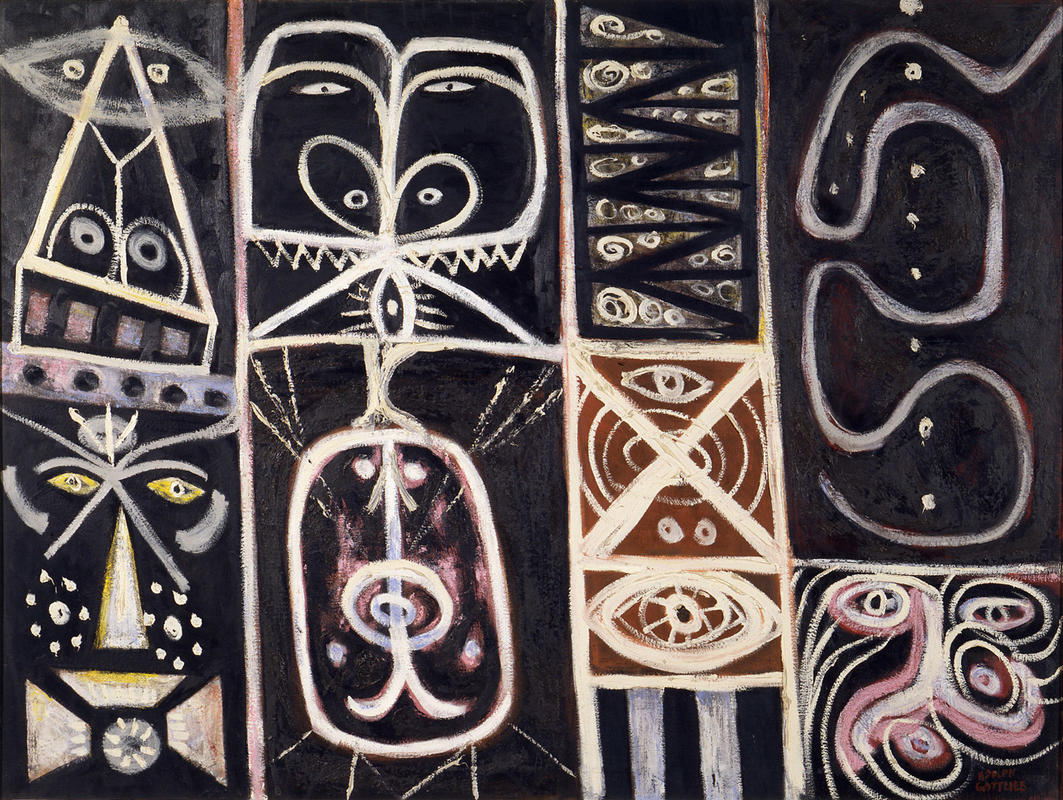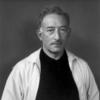More about Vigil

Contributor
Adolph Gottlieb’s Vigil looks like a chaotic party where everyone shows up wearing a weird mask.
The many lines, squiggles, and zigzags found in Vigil are reminiscent of designs from African tribal and Native American art. Vigil is part of a series called "Pictographs," which takes its name from prehistoric wall drawings. The Pictographs started in 1941 and continued for ten years as Gottlieb got his groove on with free association. In this experiment with free association, Gottlieb’s Vigil has teeth and eyes, possibly to stare into the soul! The use of eyes (in pairs and single) as a symbol isn’t new to Gottlieb’s work. His Oedipus paintings frequently use the single eye to symbolize blindness. He also could have been inspired by ancient Egyptian art, in which a single eye represents the sun. In any case, he has said the symbols in his art lack explicit meaning, and instead act as a window into his unconscious. (So he is probably not signaling to the Illuminati in this painting.)
Like Odilon Redon decades before him, Gottlieb used images and symbols to explore the subconscious world. Gottlieb’s delve into the subconscious was probably influenced by his contemporaries, though he didn't associate with the Surrealists, despite their shared interests. Gottlieb was intent on going his own way, and delved deep into mythic imagery.
Vigil has faced its fair share of criticism. One naysayer thought it would do better as a woodblock, while another said it was “an academic picture in the worst sense.” At the end of the day, a critic’s word can mean hardly anything to an artist intent on experimenting and finding new styles. In short: I doubt Gottlieb intended his work to fit within the dull structure of academia. After all, Gottlieb’s paintings were often left open-ended, which probably came down to his disinterest in putting anything resembling narrative storytelling into his work.
Sources
- Alloway, Lawrence, MacNaughton, Mary David. Adolph Gottlieb Retrospective. New York: The Arts Publisher, 1981.
- Brooklyn Museum Archives, “The Pictographs of Adolph Gottlieb.” Accessed July 20, 2021. https://www.brooklynmuseum.org/opencollection/exhibitions/1184
- Celender, Don, “Reluctant Symbolist,” New York Magazine, February 7, 1977. Accessed July 19, 2021. https://books.google.com.au/books?id=BeQCAAAAMBAJ&pg=PA63&dq=adolph+got…
- Bonnie Clearwater, “Shared Myths: reconsideration of Rothko’s and Gottlieb’s letter to The New York Times,” Archives of American Art Journal, Vol. 24, No. 1, (1984): 23-25.
- Life Magazine, “A Life round table on modern art,” Life, October 11, 1948. 62. Accessed July 17, 2021. https://books.google.com.au/books?id=dEoEAAAAMBAJ&pg=PA63&dq=Adolph+Got…
- Narrator, “Adolph Gottlieb, Vigil,” Whitney Museum. Accessed July 19, 2021. https://whitney.org/media/864
- O’Brian, John, “Review of Exhibitions of Hedda Sterne and Adolph Gottlieb,” The Collected Essays and Criticism, Volume 2. Chicago: The University of Chicago Press, 1986.
- Whitney Museum of American Art, “Adolph Gottlieb, Vigil.” Accessed July 20, 2021. https://whitney.org/collection/works/2287











